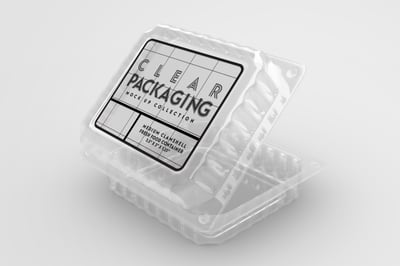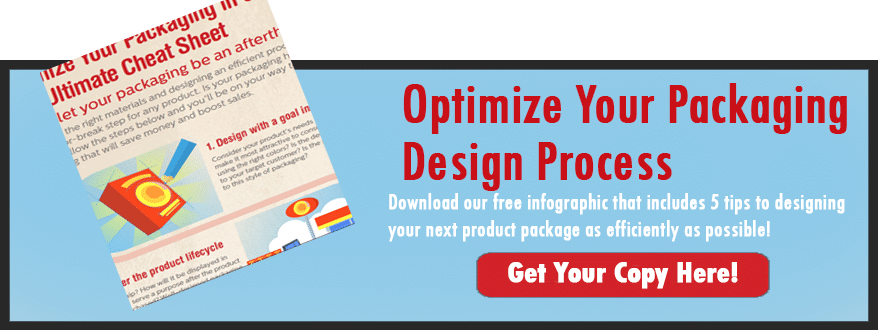What Are Clamshells? Food Packaging And Beyond
Deep-fried, boiled, or on the half shell. No matter how you eat them, one thing remains the same. Plastic clamshell containers taste absolutely awful! But, they make really great food packaging supplies.
All references to our salty seafaring friends aside, the packaging containers known as clamshells do, in fact, resemble their ocean-dwelling namesakes.
In the wide world of packaging, clamshells are a type of plastic container commonly used in food packaging applications. They can be found in supermarkets, gas station food-marts, grab-and-go food bars, and various other food retailing institutions.
Clamshells are a type of carded packaging. Carded packaging is a collection of packaging materials that generally feature two components. These components included backers made from plastic, skin-board, or paperboard and front-facing materials made of various plastic formulations.
Clamshells come from the same family of packaging materials like blister packs and skin packs. These easy-to-seal containers are ubiquitous. Chances are, you have seen them out in the wild.
Industrial Packaging has helped various types of food packaging companies implement these containers. In this article, we will take a deep-dive into the ocean of carded packaging. And we will explore the natural habitat of these flexible plastic containers.
With the information in this article, you will be able to decide if clamshell packaging makes sense for your product packaging needs or not.
What Is Clamshell Packaging?

Clamshells are a type of carded packaging. They are most commonly made of plastic. But, they can also be made from styrofoam, paperboard, cardboard, and recycled paper. They are made from two identical "shells." The shells are attached on one side and have tabs on the other side. The tabs allow them to be closed and locked shut. They resemble actual clamshells and open and close similarly.
What Packaging Applications Are Clamshells Used For?
Clamshells are most popular in the food packaging industry. They are used for packaging items such as sandwiches, pies, cookies, bread, burgers, BBQ ribs, frozen lobster tails, salads, and various other types of food products.
You can find clamshells in many different retail settings. These include markets and food stands. But they are also becoming popular in food trucks and catering services. While clamshells are primarily used in the food packaging industry, you may find some types of this packaging in hardware stores.
Nails, screws, and small home repair tools are sometimes packaged in hybrid carded packaging materials. These containers blur the lines between clamshells and blister packs.
Need Help Designing Your Packaging?
What Are The Pros And Cons Of Clamshells
To help you simplify your research on clamshells to find out if they make sense for the packaging of your products, let's take a look at a list of the pros and cons of clamshell packaging.
Pros Of Clamshell Packaging:
- Lightweight.
- Economical.
- Resealable.
- Easy to source.
Cons of Clamshell Packaging:
- Not good for liquids.
- Complicated or impossible to recycle (Dependent on material formulation).
Are Clamshells Right For You?
When it comes to deciding if clamshell packaging is right for your products, you will want to answer several questions first. Once you have the answers to these questions, you will figure out if they are a good fit for your packaging needs.
- Are you packaging food? If you answered yes, clamshells might be a good fit, depending on the type of food you are packaging. For example, sandwiches and salads are both good for clamshells.
- Are you packaging liquids? If you said yes, clamshells are not a good choice for your packaging application.
- Do you need luxury packaging? - If you are packaging items that need to evoke a sense of luxury, clamshells are not a good fit.
- Are you trying to keep packaging costs down? If you are, clamshells are an economical choice for your packaging needs.
Where Can You Learn More About Clamshells And Carded Packaging?
If you would like to learn more about clamshells or are interested in reviewing the other types of carded packaging materials currently available, you will want to start by reading this article.
Additionally, it would be a good idea to visit our learning center. There, we have tons of information about clamshells, blister packs, skin packs, surlyn film, and various other elements related to both carded and non-carded forms of packaging materials.
If you are unsure how to choose the right packaging for your products, check out the free packaging design optimization cheat sheet below. With this handy free tool, you will be able to begin the process of choosing the right packaging materials for your packaging design process.
About Nathan Dube
As the Digital Marketing Specialist at Industrial Packaging, I am honored to create content for such a phenomenal company and work with one of the greatest teams in the Packaging Industry. Whether creating a video, writing blog posts or generating other pieces of content and multimedia, I am always excited to help educate and inspire our prospects and clients to reach their highest potential in regards to their packaging processes and needs.




